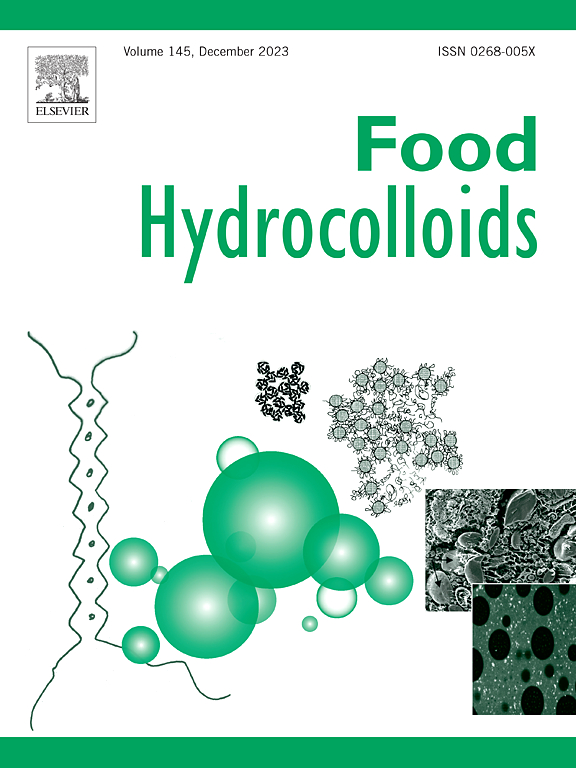The role of pea protein content and carbohydrate molecular weight in the structure and stability of spray-dried emulsions
IF 11
1区 农林科学
Q1 CHEMISTRY, APPLIED
引用次数: 0
Abstract
With increasing interest to replace dairy proteins in food products, questions of performance and stability of these alternatives rise. Plant-based proteins and carbohydrates that are used for dried emulsion systems, like plant-based milk or creamer powder, are expected to influence micro structure of final powders with further impact on storage stability. The aim of this work was to investigate the plant-based matrix, with focus on pea protein content and carbohydrate molecular weight, on spray-dried powder structure, fat distribution and oxidation stability of the bioactive component beta carotene. Spray-dried powders were produced from plant-based emulsions with varying protein content (2.4, 20% wt) and maltodextrin dextrose equivalent (DE 6, 21, 40). Both factors significantly impacted particle structure and free fat content of spray-dried powders. While the effect on structure and morphology did not follow clear trends, free fat differed greatly between powders (4.5–88.8%) and showed to increase with protein content and decreased maltodextrin DE. Beta carotene stability during storage followed similar trends, with highest retention after storage measured for coarse, low protein and maltodextrin DE 40 powder (37.9%), while poorest performance was found for powders with maltodextrin DE 6 (9.5–12.3%), independent of the protein content. The study showcases the high impact of carbohydrate molecular weight and plant proteins on structure and thus stability indicators of plant-based powders. For a sustainable substitution of dairy protein in food powders, these differences need to be considered during processing and production.

求助全文
约1分钟内获得全文
求助全文
来源期刊

Food Hydrocolloids
工程技术-食品科技
CiteScore
19.90
自引率
14.00%
发文量
871
审稿时长
37 days
期刊介绍:
Food Hydrocolloids publishes original and innovative research focused on the characterization, functional properties, and applications of hydrocolloid materials used in food products. These hydrocolloids, defined as polysaccharides and proteins of commercial importance, are added to control aspects such as texture, stability, rheology, and sensory properties. The research's primary emphasis should be on the hydrocolloids themselves, with thorough descriptions of their source, nature, and physicochemical characteristics. Manuscripts are expected to clearly outline specific aims and objectives, include a fundamental discussion of research findings at the molecular level, and address the significance of the results. Studies on hydrocolloids in complex formulations should concentrate on their overall properties and mechanisms of action, while simple formulation development studies may not be considered for publication.
The main areas of interest are:
-Chemical and physicochemical characterisation
Thermal properties including glass transitions and conformational changes-
Rheological properties including viscosity, viscoelastic properties and gelation behaviour-
The influence on organoleptic properties-
Interfacial properties including stabilisation of dispersions, emulsions and foams-
Film forming properties with application to edible films and active packaging-
Encapsulation and controlled release of active compounds-
The influence on health including their role as dietary fibre-
Manipulation of hydrocolloid structure and functionality through chemical, biochemical and physical processes-
New hydrocolloids and hydrocolloid sources of commercial potential.
The Journal also publishes Review articles that provide an overview of the latest developments in topics of specific interest to researchers in this field of activity.
 求助内容:
求助内容: 应助结果提醒方式:
应助结果提醒方式:


